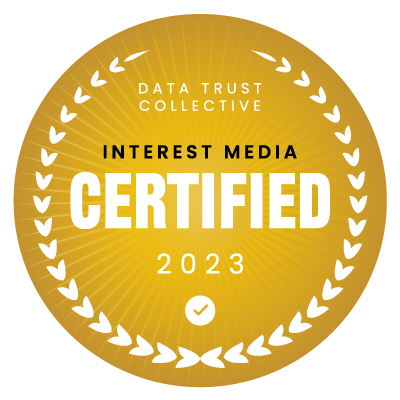
11 Ways to Persuade with Emotional Intelligence Without Being Pushy
- Understand and empathize with your audience to create a connection based on their emotions, needs, and desires
- Use storytelling to evoke specific feelings and make your brand message more memorable and impactful
- Be authentic and transparent, showcasing the human side of your brand and aligning with your audience’s emotions and values to build trust and a successful marketing campaign
Selling a product or service is always a matter of finding the right blend of enticement and persuasion without annoying prospects with the “hard sell.” Recognizing and influencing the emotions of your prospects is the key.
The Best Way to Personalize is to Appeal to Emotions
“80% of shoppers are more likely to buy from a company that offers personalized experiences.” – Instapage
Shoppers want personalization. They want to do business with companies that understand them.
Intent-based marketing works on the principle of understanding what your prospect is looking for and presenting a message within the right context at the moment when they are most likely to purchase.
Therefore, the more your advertising messages can be personalized, the more effective they will be. Businesses using intent-based marketing to sell products or services could gain an advantage by employing emotional intelligence in their marketing strategies.
The concept is simple: By understanding the emotions of your buyers at various stages in the sales funnel, you can craft your marketing messages to appeal to their emotional state at that specific juncture.
In this article, we’ll look at 11 ways you can use emotional intelligence to put yourself in your prospect’s shoes and craft the marketing messages they want to hear to persuade them to buy without ever appearing pushy.
What is Emotional Intelligence?
Emotional intelligence (EI or EQ for “emotional quotient”) has become a buzzword that is making the rounds, particularly in marketing, writing circles, and the workplace.
Emotional intelligence is defined as the ability to perceive, interpret, demonstrate, control, evaluate, and use emotions to communicate with and/or relate to others effectively and constructively.
More simply put, emotional intelligence is the ability to understand and manage your own emotions as well as recognize and influence the emotions of others.
According to Harvard Business School, researchers John Mayer and Peter Salovey first coined the term in 1990, but later became popularized by psychologist Daniel Goleman.
4 pillars of emotional intelligence
We can break emotional intelligence into four pillars we must consider when crafting our marketing messages.
1. The Prospect’s Awareness
You need to understand the strengths and weaknesses your prospect may have. They are looking for your services either to bolster the strengths they already have or to overcome their weaknesses.
2. The Prospect’s Self-Management
Your prospect may be in a certain emotional state due to the problem they are trying to solve. Your job is to craft messages that encourage them to self-manage their emotions and maintain a positive outlook despite the stress and setbacks. Your message is that they have what it takes to overcome this obstacle using your solution.
3. Social Awareness
Depending on the situation, there may be social pressure on your prospect that is also contributing to their emotional state. The response here is to create empathetic messages.
4. Managing Relationships
Your prospect’s problem could involve some form of conflict. Your messages should emphasize how your solution will avoid or resolve conflict. In addition to selling your solution, your messages should be aimed at influencing, coaching, and mentoring your prospects, while boosting morale.
Related Articles:
- Interest Media: Authenticity in Marketing
- Inc: People with Emotional Intelligence Use These 5 Words
- Harvard Business Review: The New Science of Customer Emotions
- Interest Media: Using AI to Personalize Your Marketing
- Inc: 6 Ways to Persuade
Emotions Sell: Changing Times Require Modified Techniques
It’s well established that targeting a prospect’s emotions is an effective selling technique.
“Ads with purely emotional content performed twice as well compared to those with only rational content (31% vs. 16%).” –IPA study, according to neuroscience marketing
We live in a moment in time of cultural change. People are more sensitive to a variety of issues than they were in previous years. For that reason, marketing requires a stronger understanding of emotional nuances and how to navigate them without unintentionally being offensive.
That’s where emotional intelligence comes into play.
11 Simple Methods for Persuading with Emotional Intelligence without Being Pushy
Very rarely does someone have a product that sells itself. In the book Ca$hvertising, Drew Eric Whitman reminds us: “Sales is a subset of advertising. Persuasion is a subset of sales. And psychology is a subset of persuasion.” The better marketers can understand psychology, the better they can target emotions.
Here are 11 methods to consider.
1. Start a conversation to understand what prospects want
the most direct way to understand what your prospects want is to ask them. Start a conversation. Use this data to personalize their future messaging. By asking upfront, when they respond, in essence, they are granting permission to persuade them.
2. Prefacing messages
This might be described as “the push before the push,” a message that’s meant to inform before you make a sales push. Some examples:
– “We have an idea we’d like you to consider…”
– “Do you mind if we offer you some advice?”
– “Here’s a story we hope you’ll find interesting and even helpful…”
3. Hyper-personalization
Two different prospects at the same point in the sales funnel may not have the same needs – even when purchasing the same product. If you can target these prospects individually and address their specific needs – the better your chances of making a sale. Tools such as those offered by Interest Media or AI can help with improving personalization.
4. Seeing through your prospect’s eyes
Intent-based marketing is all about sending the right message in the right context at the right time. How do you do that? Understanding what your prospect wants to hear and see at that time.
5. Always ask “what’s in it” for your prospects
Put yourself in your prospect’s shoes and focus solely on their outcome. Construct your messages based on why your solution is in their best interest, and if applicable, even the people they care about.
6. How can you be the most helpful to your prospect?
Focusing your messages on providing knowledge, and even connections to other helpful sources, is a way of assisting your prospects without selling, which builds trust, establishes you as an expert, and works to increase your persuasive and influential power.
7. Take the focus off you
Removing the focus off yourself, not only makes it all about the customer and puts them first, but it also shows that you care more about them and their problem. An effective way to do that is to show other solutions. Then, show why yours is better
Here is where being completely authentic can be a big win. If you aren’t the only solution in your field, don’t be afraid to talk about other solutions. However, demonstrate the potential negatives of the other solutions and why yours is ultimately the best.
8. Saving face: Addressing a prospect’s weaknesses
Sometimes a prospect is purchasing your solution to overcome a specific weakness. There may be emotions around this weakness. When crafting messages to a prospect, tread lightly, and allow your prospect to “save face,” and not feel bad about having the weakness. Some example messages might be:
– We’ve made this mistake ourselves, that’s why our solution…
– We know you would’ve figured this out on your own, but our solution will…
– We all get busy, so don’t forget…
9. Polite messaging
As already discussed in this article, marketers today need to be more aware of sensitivity and messages that could trigger an unintentional response. Edgy and snarky tones that worked in the past may not work today. While being polite should be a default these days, some audience segments may require a higher degree of politeness than others.
10. Tell a story
Want to know the secret ingredient for blockbuster novels and films? (Hint: It’s not car chases and bombastic action). It’s telling emotional stories that cause audiences to bond with the characters. In the same way, telling an emotional story to your prospect can help them bond with your solution and/or company and turn them into a long-term customer.
11. Focus on these 10 high-impact emotional desires
“Customers who are emotionally connected to a business are 52% more valuable, on average, than those who are just highly satisfied.” – Study by the Harvard Business Review
In a recent article entitled “The New Science of Customer Emotions,” by the Harvard Business Review (HBR), after looking at hundreds of “emotional motivators” that drive consumer behavior, HBR found there were ten that significantly affected customer value across all the categories that researchers studied.
The following are the 10 answers to the question “I am inspired by a desire to:”
- Stand out from the crowd.
- Have confidence in the future.
- Enjoy a sense of well-being.
- Feel a sense of freedom.
- Feel a sense of thrill.
- Feel a sense of belonging.
- Protect the environment.
- Be the person I want to be.
- Feel secure.
- Succeed in life.
Understanding Your Audience
The use of emotional intelligence can help make marketing messages more personal while demonstrating a company understands the prospect and what they need.
Going further, in the current cultural climate, emotional intelligence is a key tool to utilize in crafting persuasive messages that can appeal to a prospect’s emotional state while hitting just the right tone to be effective.
Interested in Learning More?
Check out our Free White Paper on The Unbeatable Nature of Intent-Based Advertising or reach out to one of our brand promotion specialists! We pride ourselves on being able to bring advertising partners the exact consumers they’ve been looking for.












